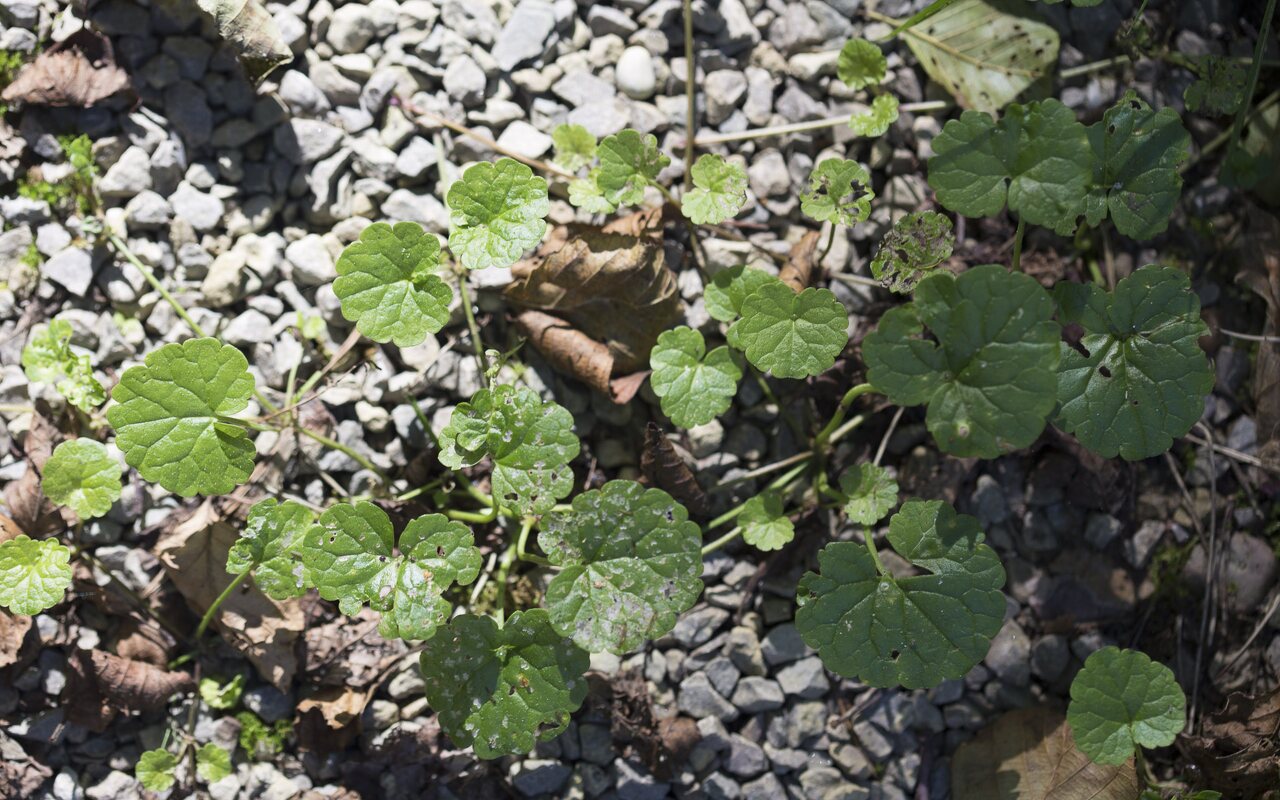
Alliaria petiolata leaves · vaistinė česnakūnė, lapai
- Alliaria officinalis
- garlic mustard, jack-by-the-hedge, garlic root, hedge garlic, sauce-alone, jack-in-the-bush, penny hedge, poor man's mustard
- Knoblauchsrauke
- vaistinė česnakūnė
- ārstniecības ķiplocene
- czosnaczek pospolity
It is native to Europe, western and central Asia, north-western Africa, Morocco, Iberia and the British Isles, north to northern Scandinavia, and east to northern Pakistan and Xinjiang in western China.
It is an herbaceous biennial plant growing from a deeply growing, thin, whitish taproot scented like horseradish. In their first years, plants are rosettes of green leaves close to the ground; these rosettes remain green through the winter and develop into mature flowering plants the following spring. Second-year plants often grow from 30–100 cm tall. The leaves are stalked, triangular through heart shaped, 10–15 cm long (of which about half being the petiole) and 5–9 cm broad, with coarsely toothed margins. The flowers are produced in spring and summer in small clusters. Each small flower has four white petals 4–8 mm long and 2–3 mm broad, arranged in a cross shape. The fruit is an erect, slender, four-sided capsule 4–5.5 cm long, called a silique, green maturing to pale grey brown, containing two rows of small shiny black seeds which are released when a silique splits open. A single plant can produce hundreds of seeds, which often scatter several meters from the parent plant.
Garlic mustard is one of the oldest spices used in Europe. Phytoliths in pottery of the Ertebølle and Funnelneck-Beaker culture in north-eastern Germany and Denmark, dating to 4100–3750 BCE, indicate its use in that era. Garlic mustard was introduced to North America by European settlers in the 1800s for culinary and medicinal purposes. The plant is classified as an invasive species in North America.
Dvimetis arba daugiametis, 20-100 cm aukščio žolinis augalas, kvepiantis česnaku, ypač patrintas. Stiebas stačias, briaunotas, apatinė dalis apaugusi baltais, ilgais, žemyn palinkusiais plaukeliais, lapuotas. Lapai ploni, pliki, pamatiniai ilgakočiai, inkstiški, karbuoti, stiebiniai gerokai trumpesniais lapkočiais, nelygiai dantyti, trikampiai. Žiedkočiai gana ilgi, laibi. Žiedai stiebo viršūnėje. Taurėlapiai 4, statūs, 2-3 mm ilgio. Vainiklapiai 4, balti, dvigubai ilgesni už taurėlapius, su trumpais nageliais. Vaisius – cilindriška, briaunota, 3-6 cm ilgio ir 2 mm pločio, atsilošusi ankštara. Sąvaros išgaubtos, su gana ryškia vidurine gysla. Pertvara plona, permatoma. Sėklos nedidelės, pailgos, juosvai rusvos, išsidėsčiusios lizde viena eile.
Žydi nuo balandžio iki birželio mėn. Dažna visoje Lietuvoje. Auga lapuočių miškuose, miškų pakelėse ir aikštelėse, krūmuose, upių ir paežerių šlaituose, patvoriuose, šiukšlynuose, žvyrynuose. Nuo seno Europoje buvo vartojamas maistui ir kaip vaistažolė. 5596